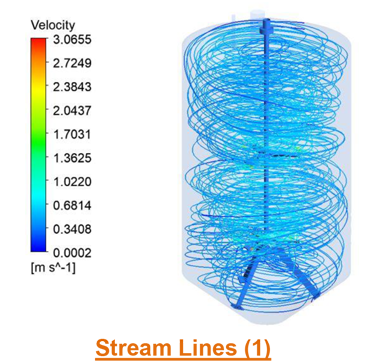
Get Your Free Quote…!


A Paddle Flocculator is a key piece of equipment used in water and wastewater treatment processes to promote flocculation – the gentle mixing of coagulated particles to form larger aggregates (flocs) that can be easily separated through sedimentation or filtration. Designed for optimal energy efficiency, uniform mixing, and controlled shear, paddle flocculators are widely used in municipal, industrial, and process water treatment applications.
At Verito, we offer robust, efficient, and customizable paddle flocculators engineered for reliable operation under varying process conditions. Our designs focus on performance, durability, ease of maintenance, and energy optimization.

Working Principle
The paddle flocculator operates by imparting controlled, low-intensity mixing energy to facilitate the collision and agglomeration of particles in the water. Coagulants added upstream cause destabilization of fine particles, and the paddle flocculator ensures uniform distribution and sufficient contact time for particles to form flocs.
Key principles involved include:
Paddle Design
Shaft & Support
Drive Mechanism
Tank Integration
Material Selection
| Parameter | Typical Range / Details |
|---|---|
| Paddle Width | Custom up to 5000 mm |
| Shaft Material | SS304 / SS316 / Carbon Steel (epoxy coated) |
| Paddle Material | SS304 / SS316 / FRP |
| Bearing Type | Heavy-duty sealed bearings |
| Drive Type | Electric motor with VFD control |
| Mounting | Top-entry, side-entry or center shaft |
| Application Area | Municipal water, wastewater, industrial effluent treatment, chemical processing, desalination |
Applications
Advantages of Paddle Flocculator
Why Choose Verito Paddle Flocculators?
Contact Us
For detailed consultation, customized design support, or to request technical data sheets and pricing, reach out to our experts at Verito. We help you build smarter, more efficient, and sustainable water and wastewater treatment systems with reliable paddle flocculators tailored to your needs.
These mixer agitators are comes in several specifications as per the need of our customers. The offered mixer agitators are tested from our end in order to deliver a defect free range to customer's end. Our mixer agitators are developed with quality material under the direction of skilled professionals.
We ensure the highest quality & performance of our Agitators. At the same time, we have a very strong performance track record of supplying various types of agitators for various applications.


